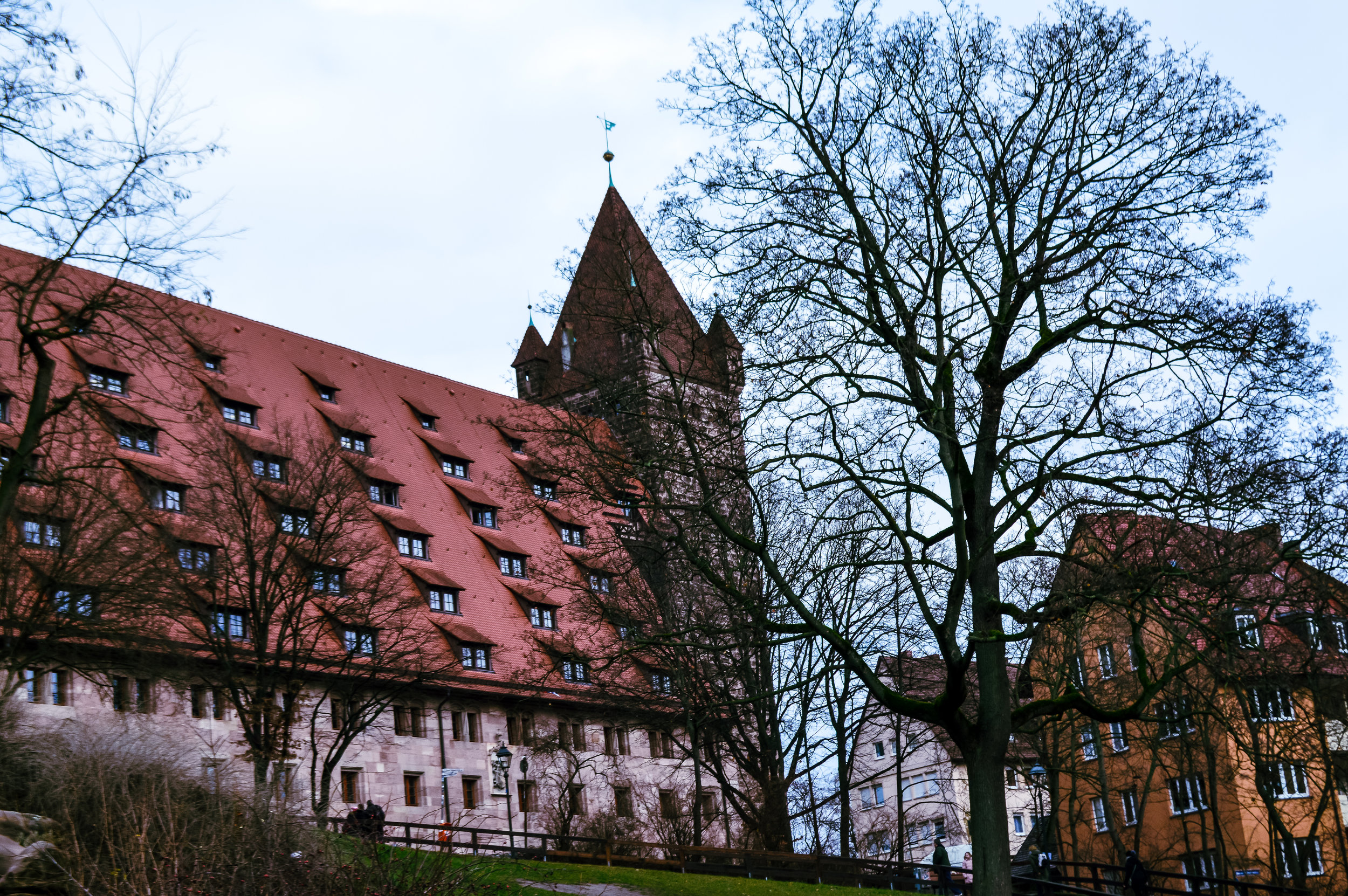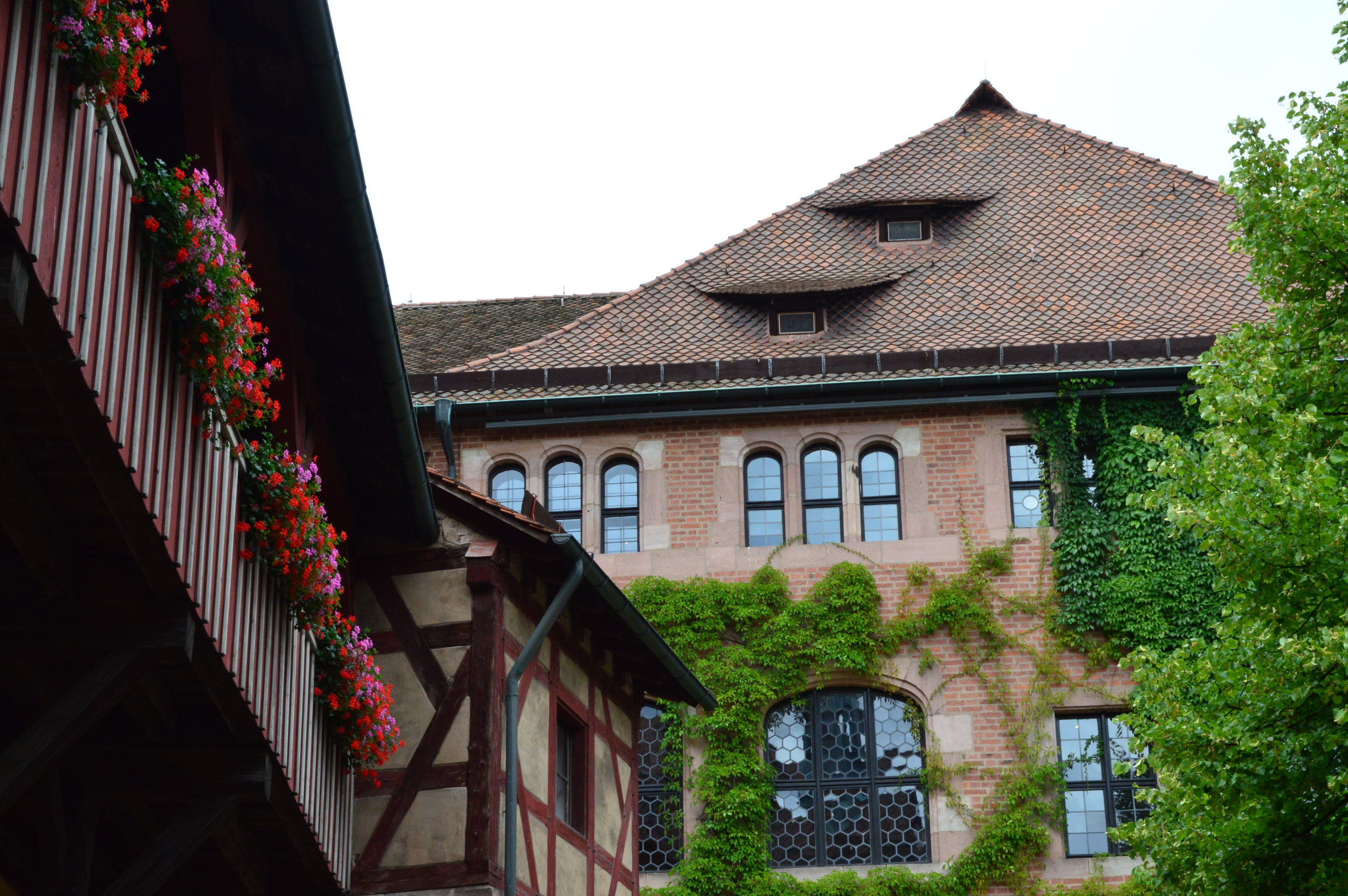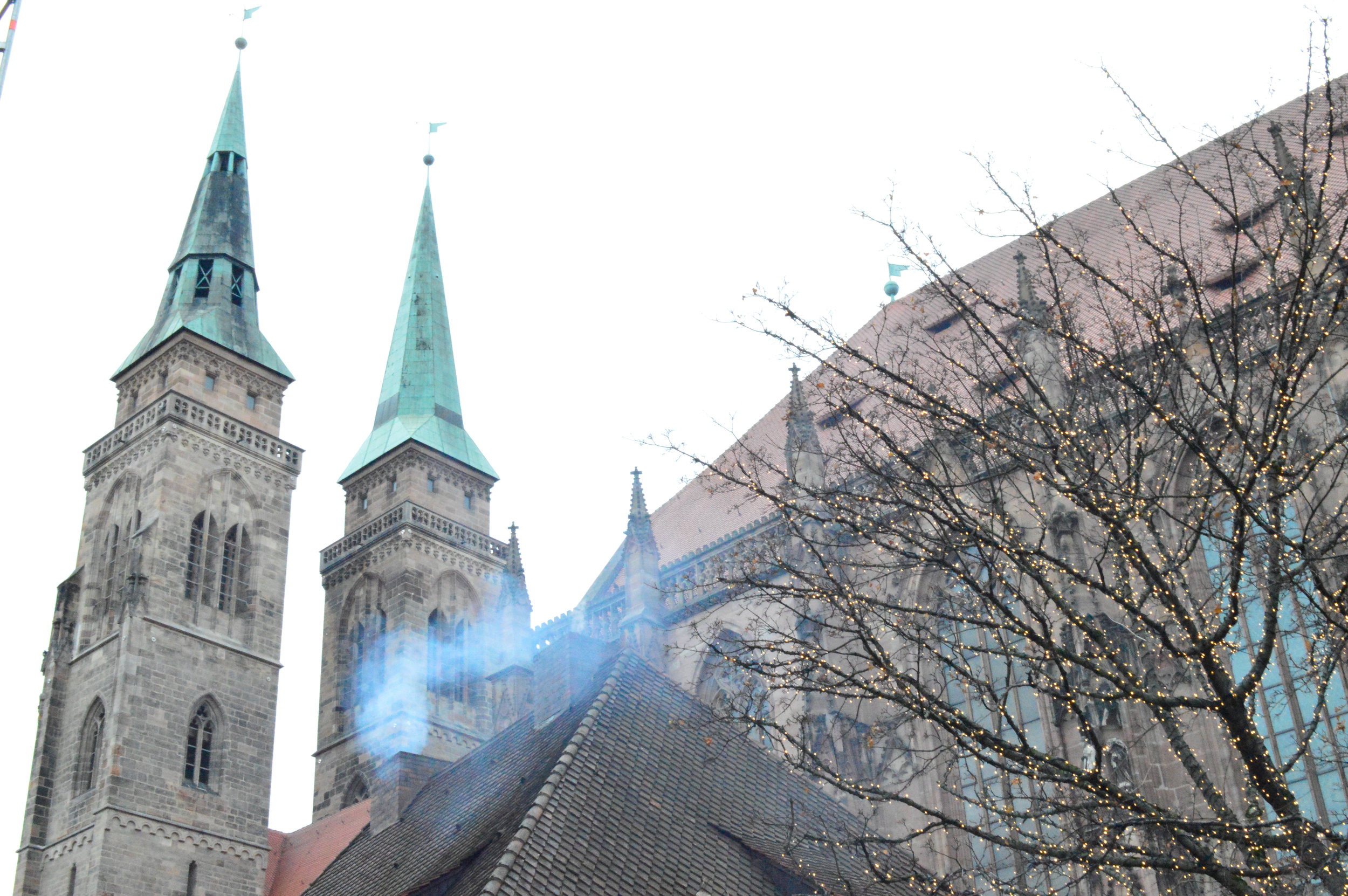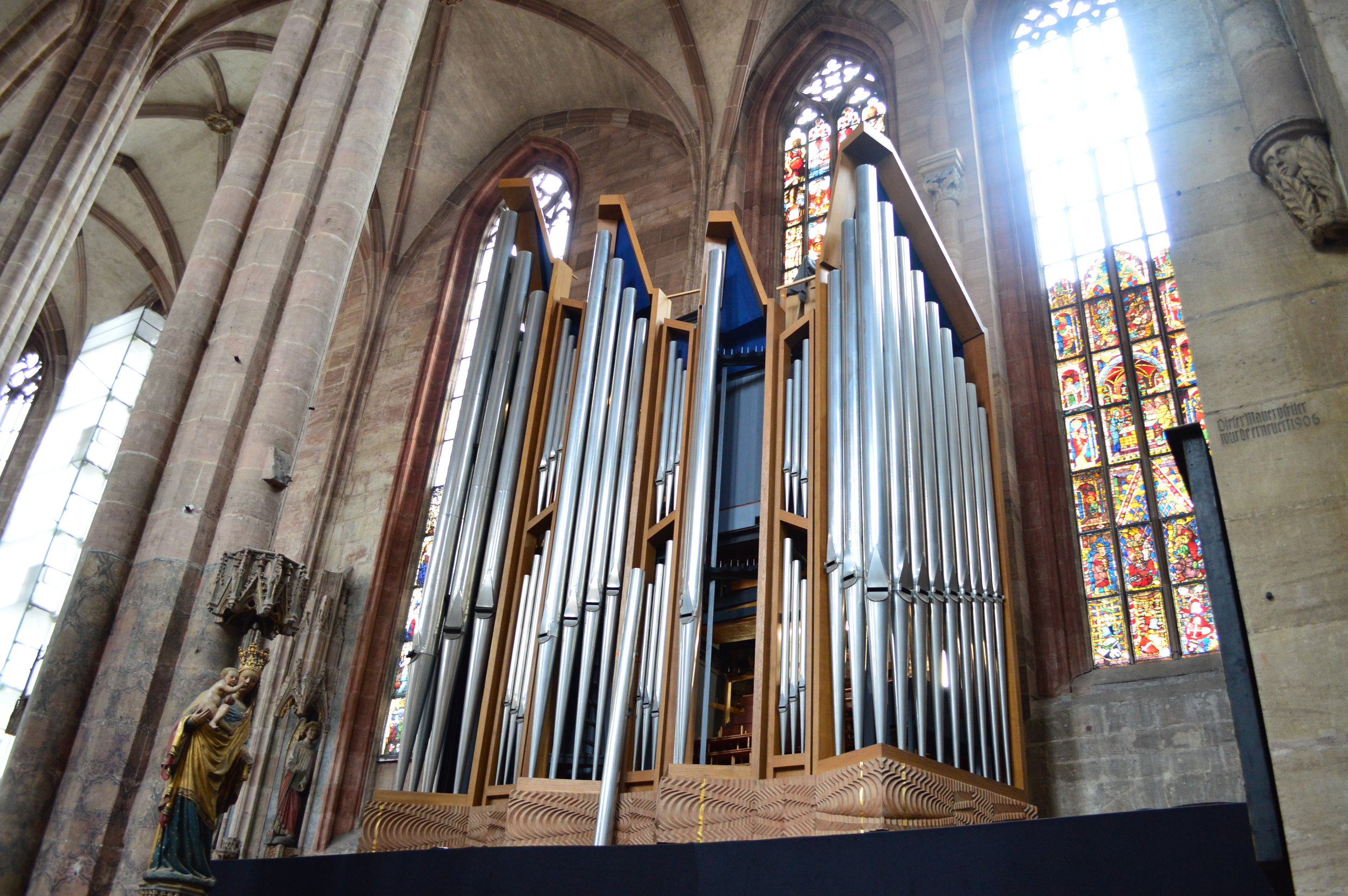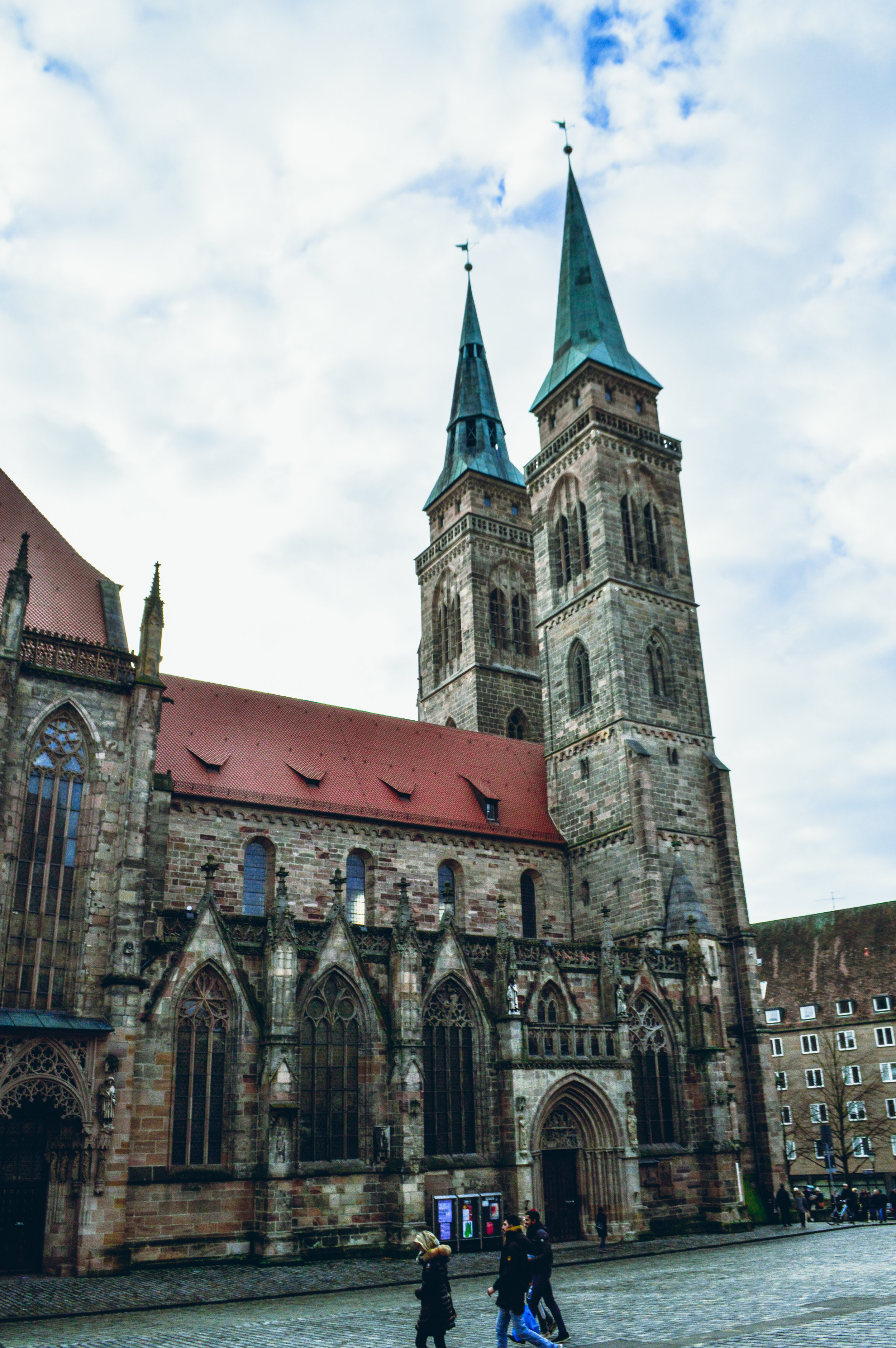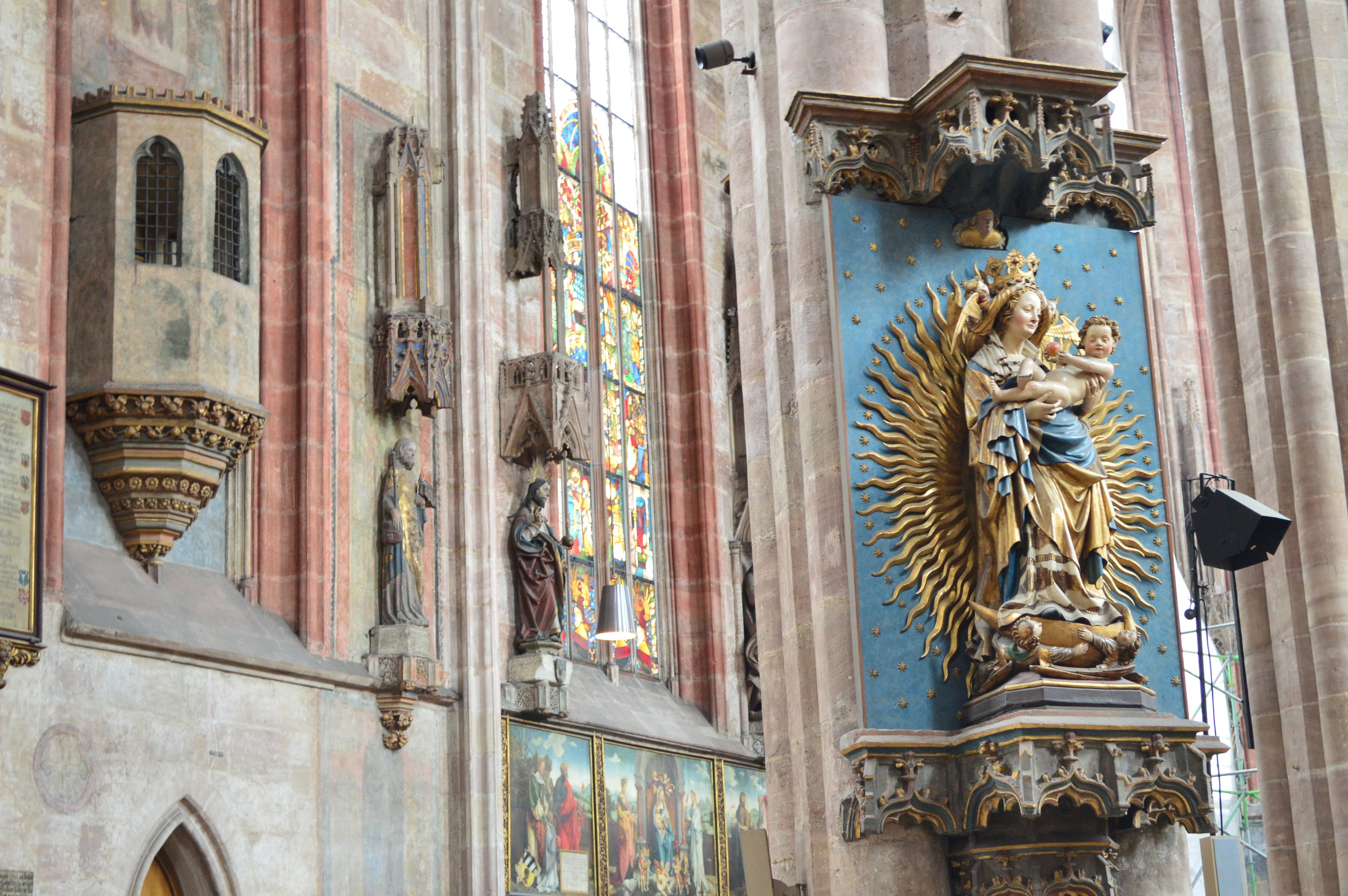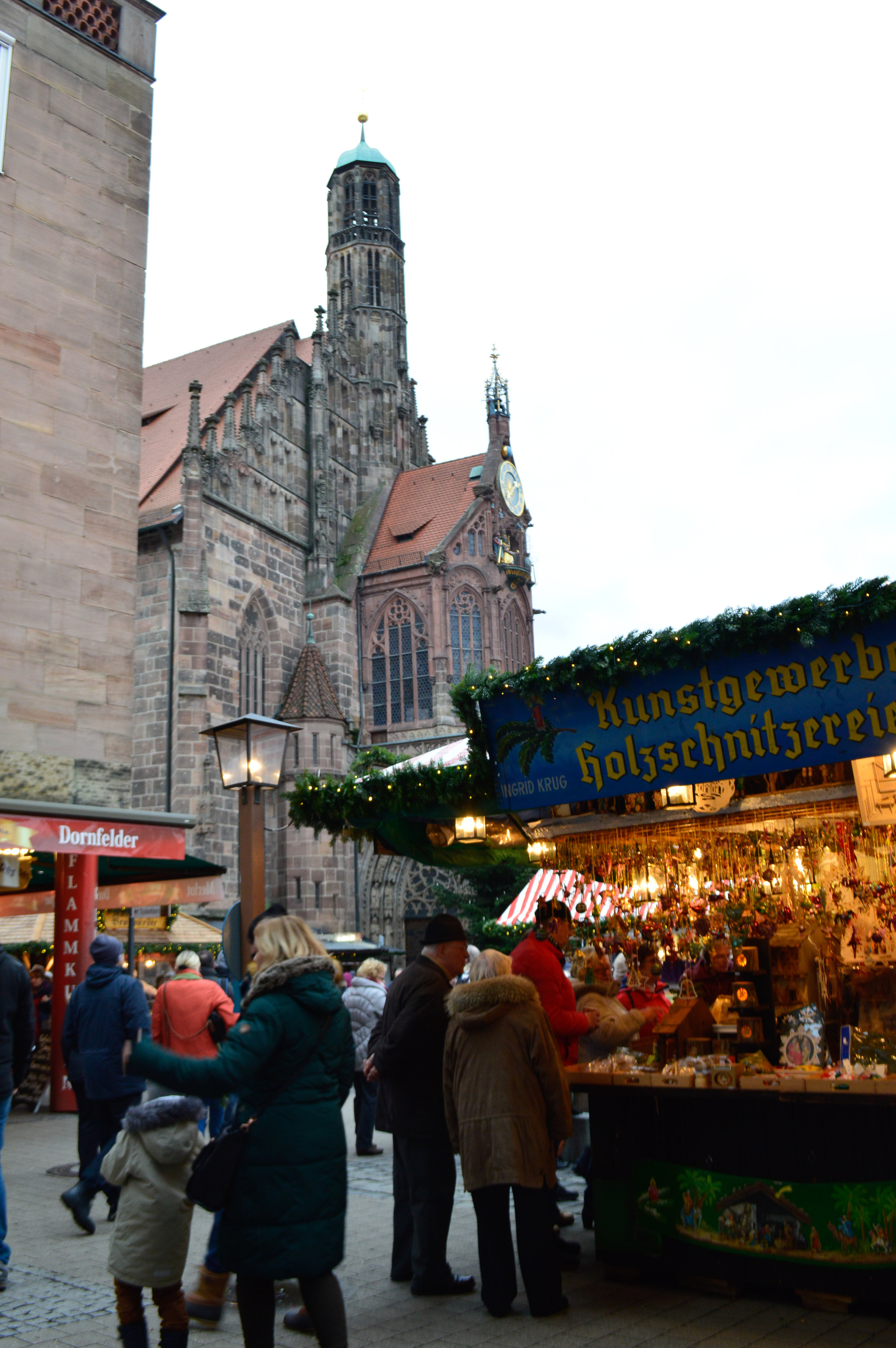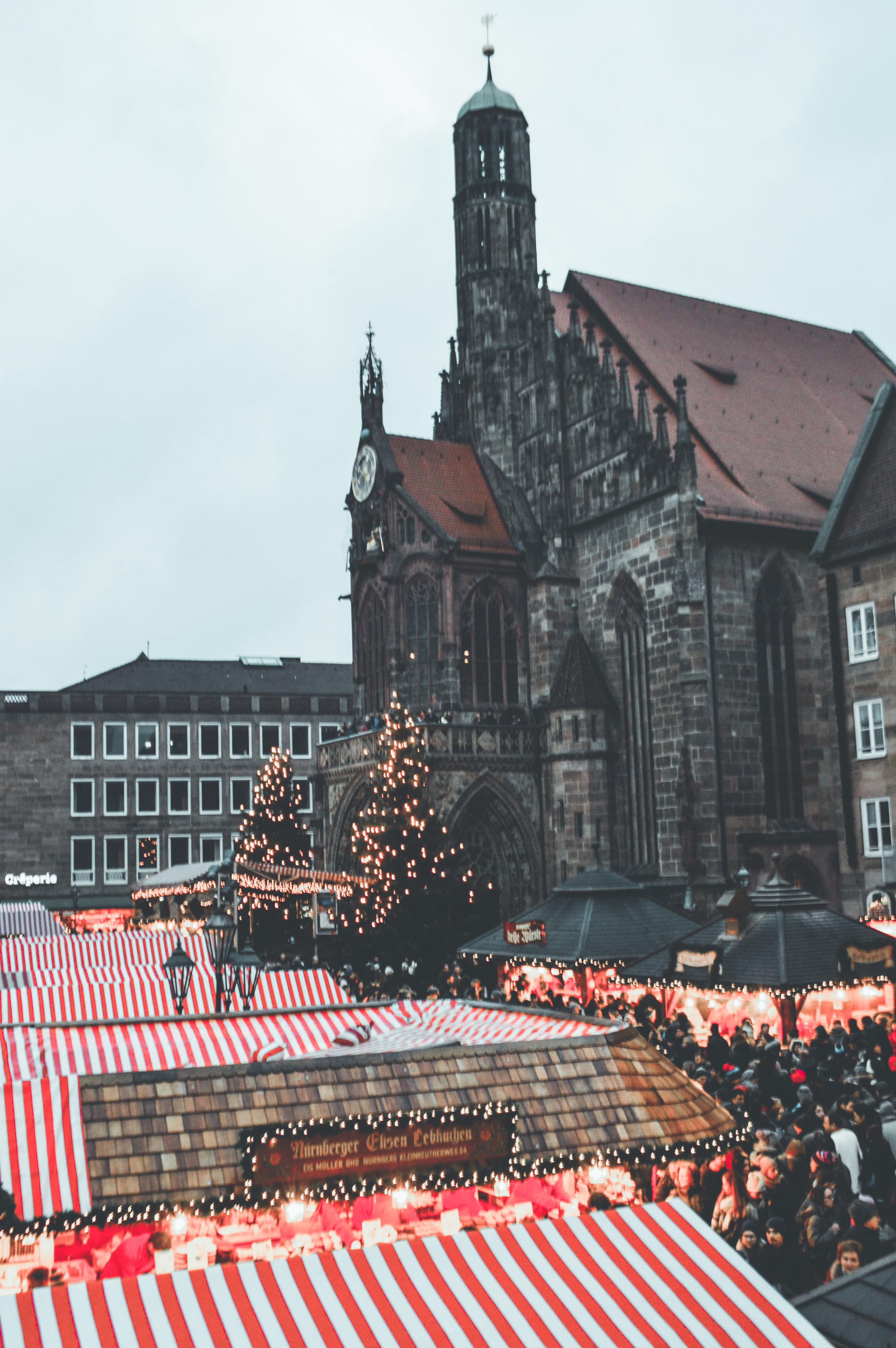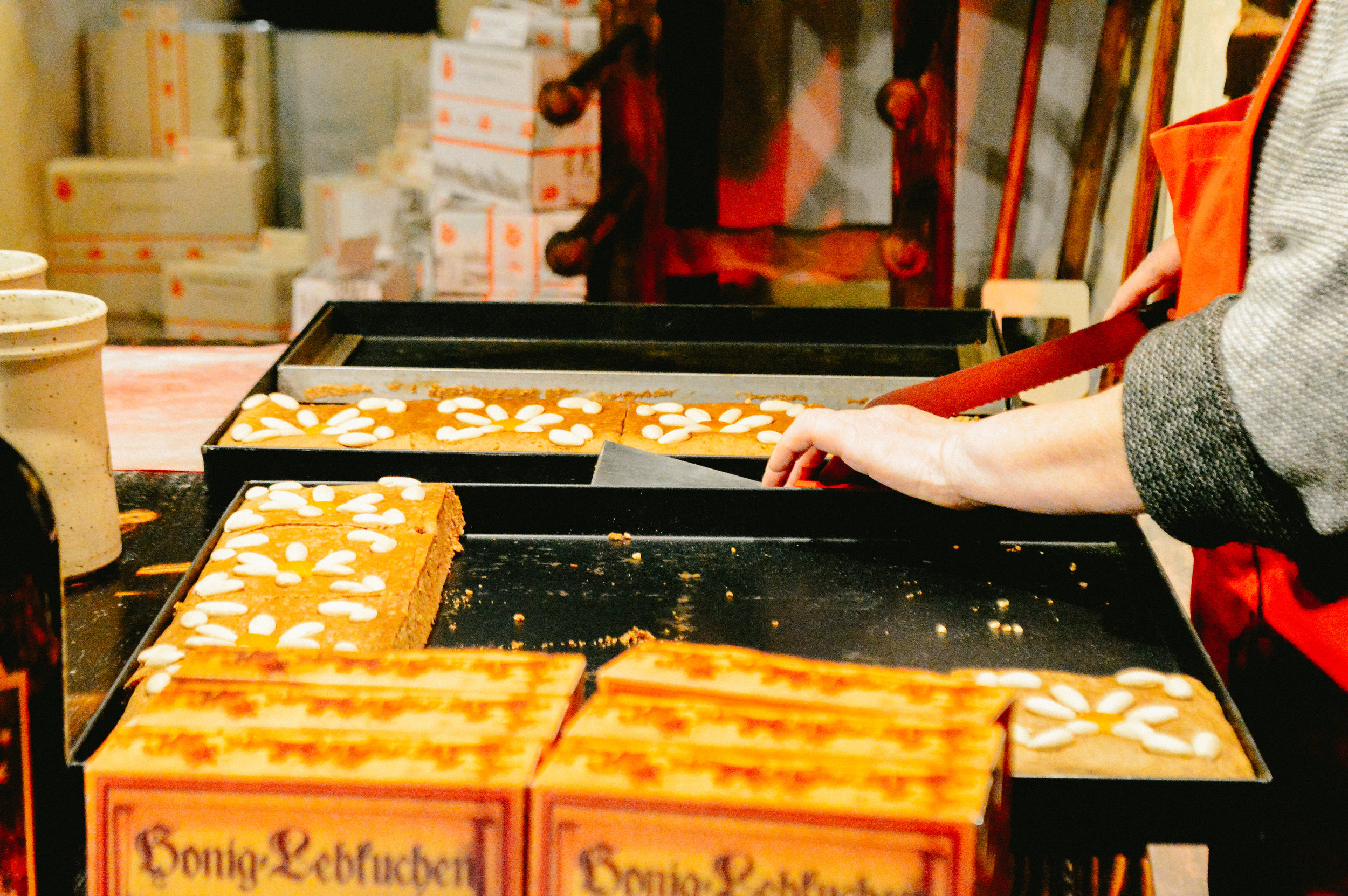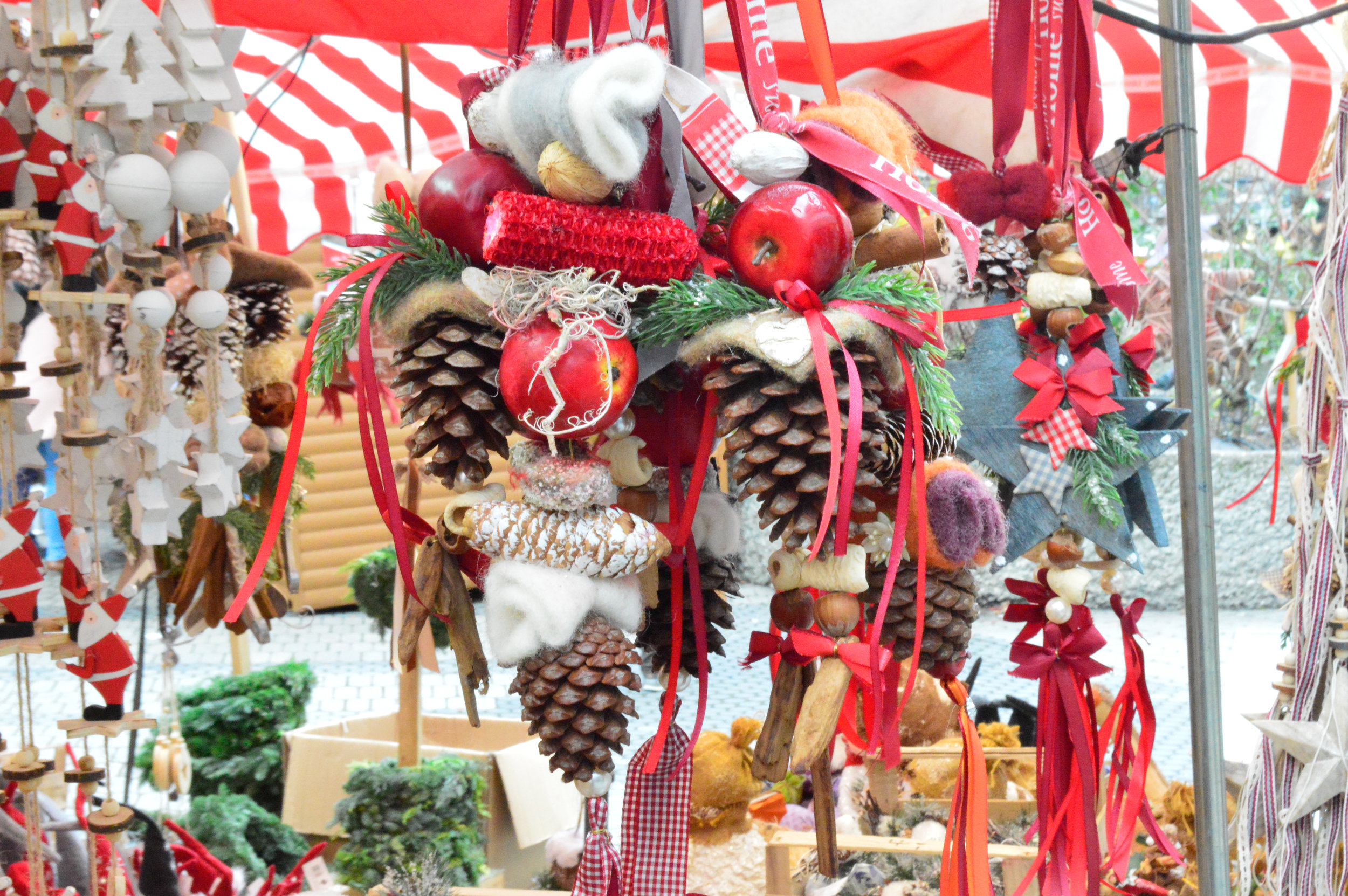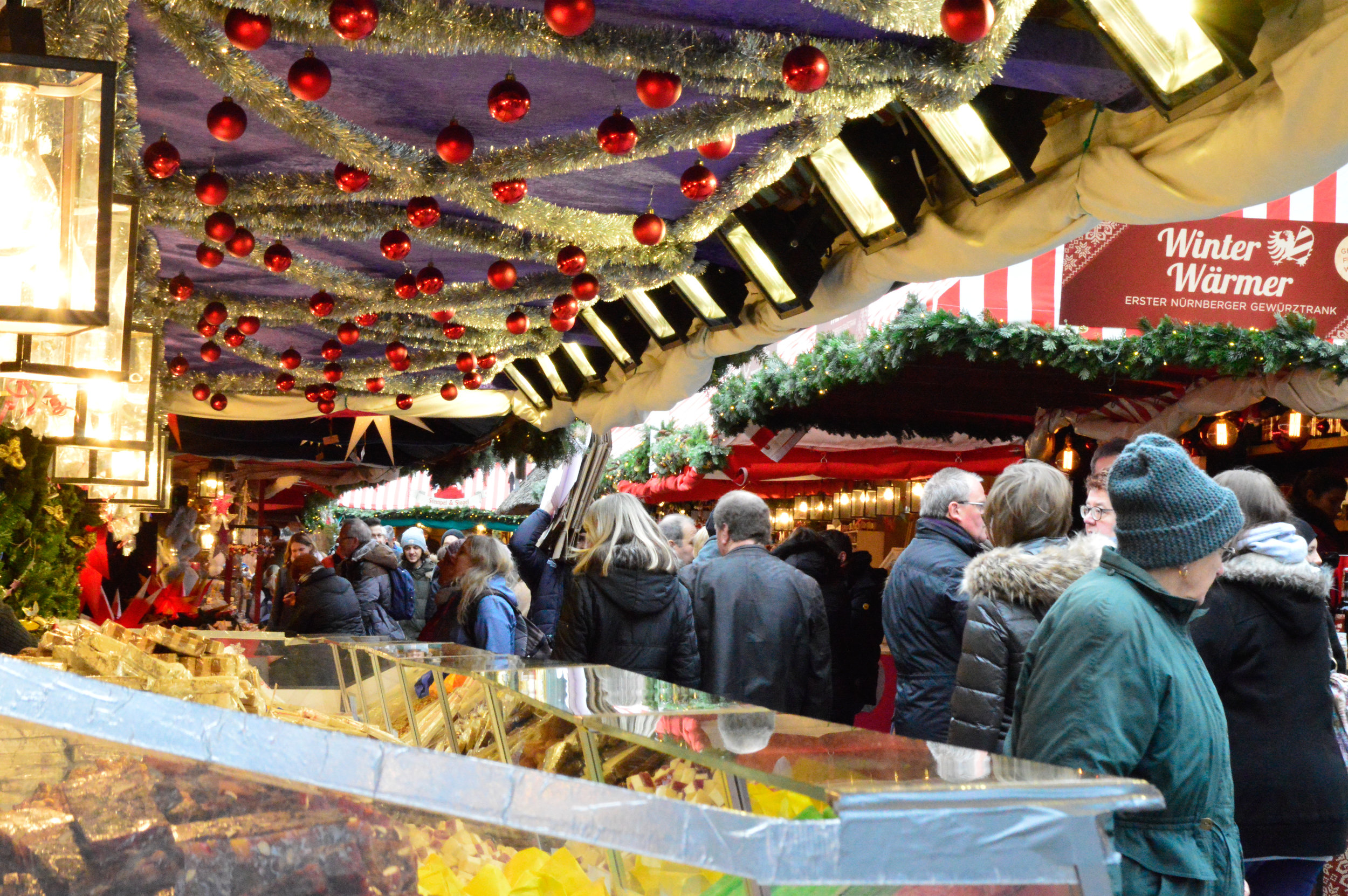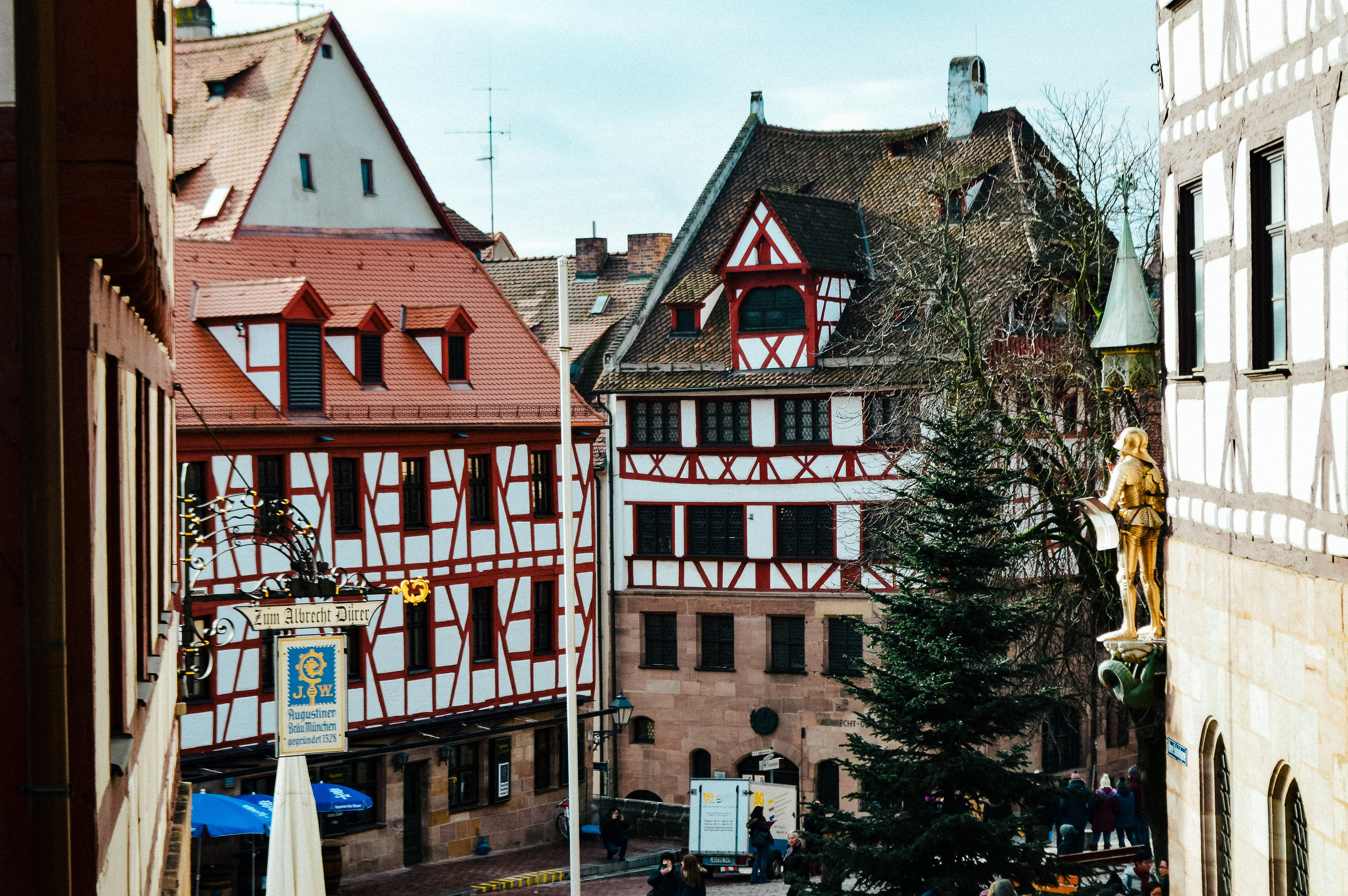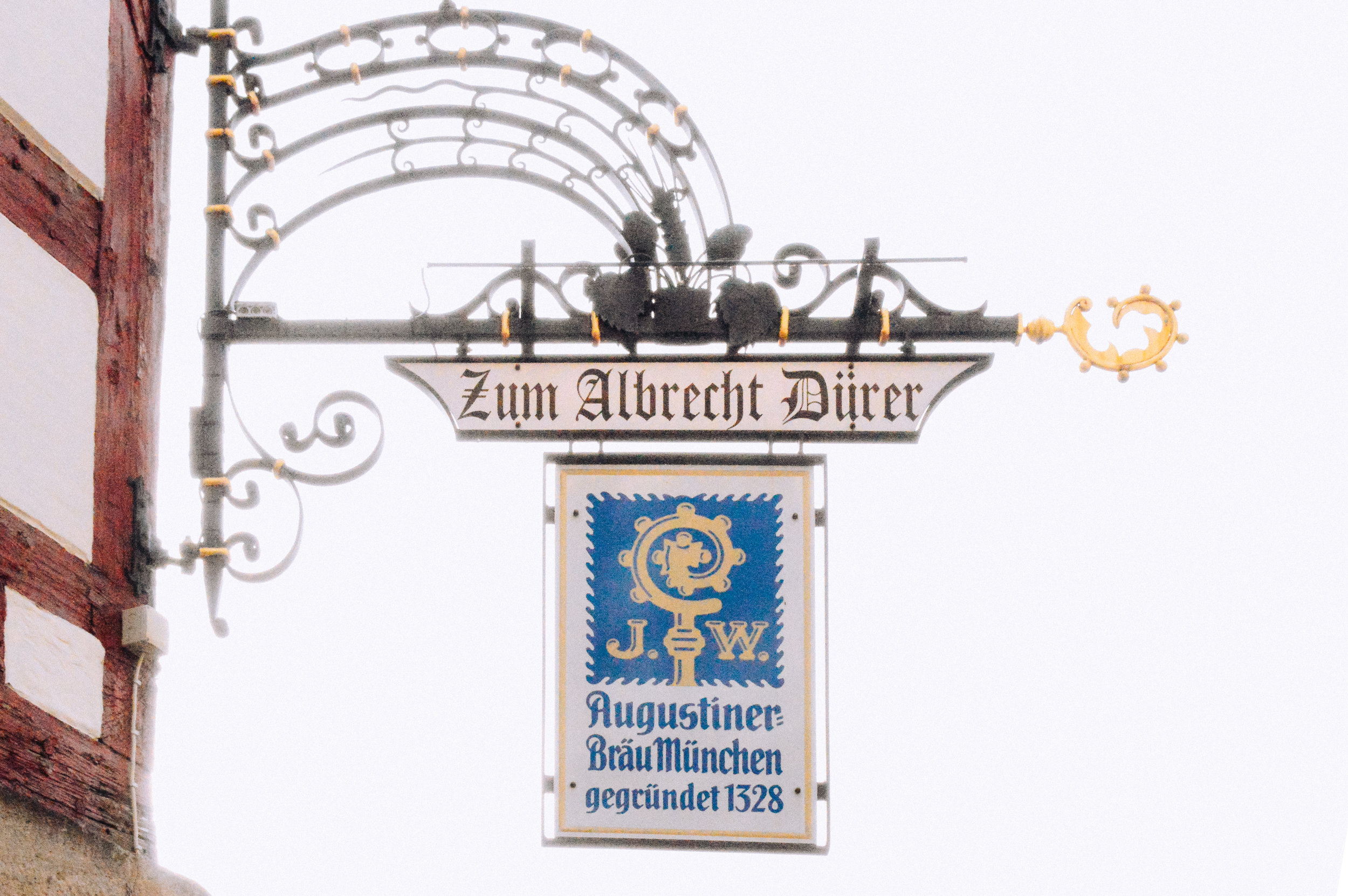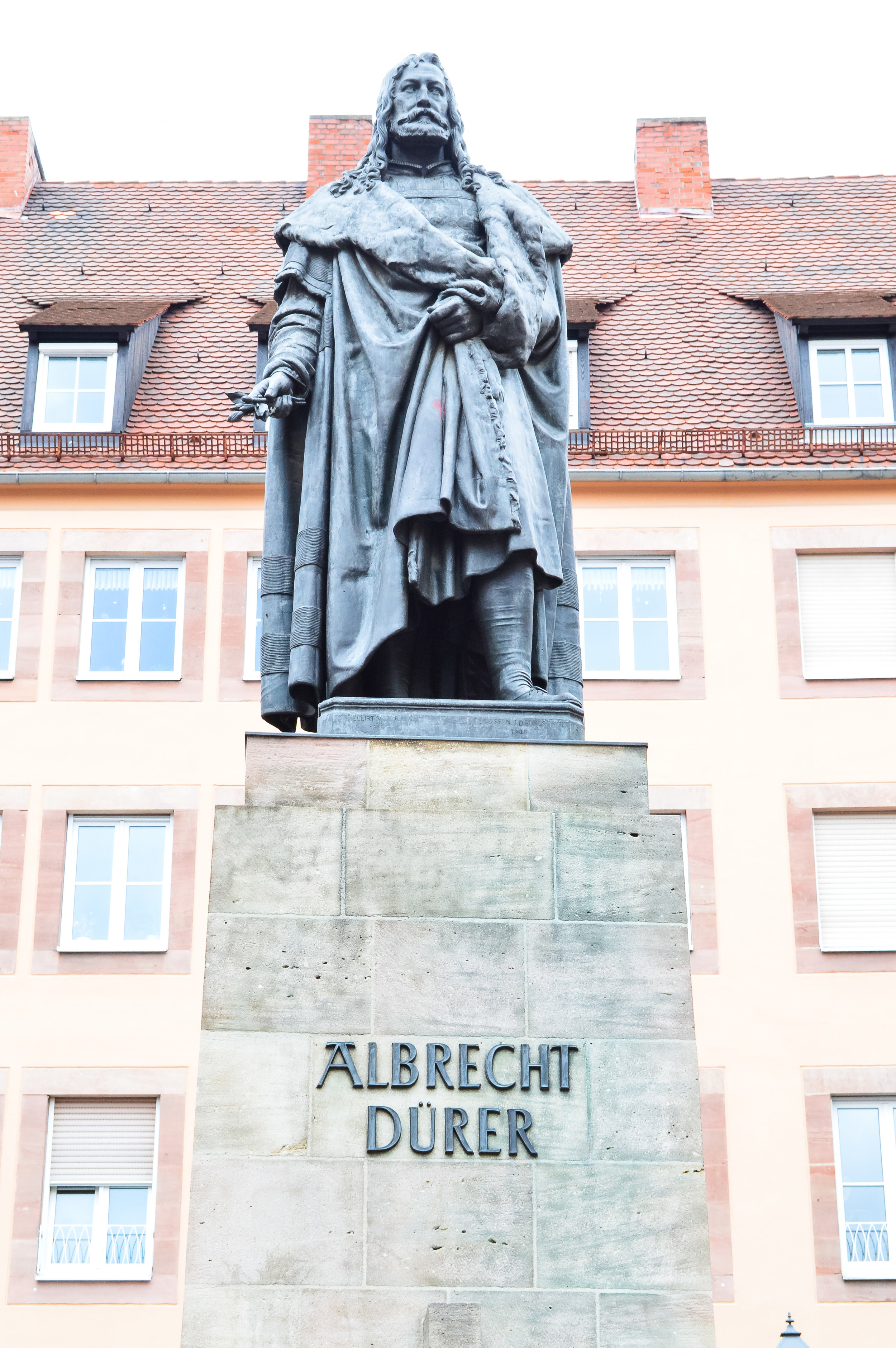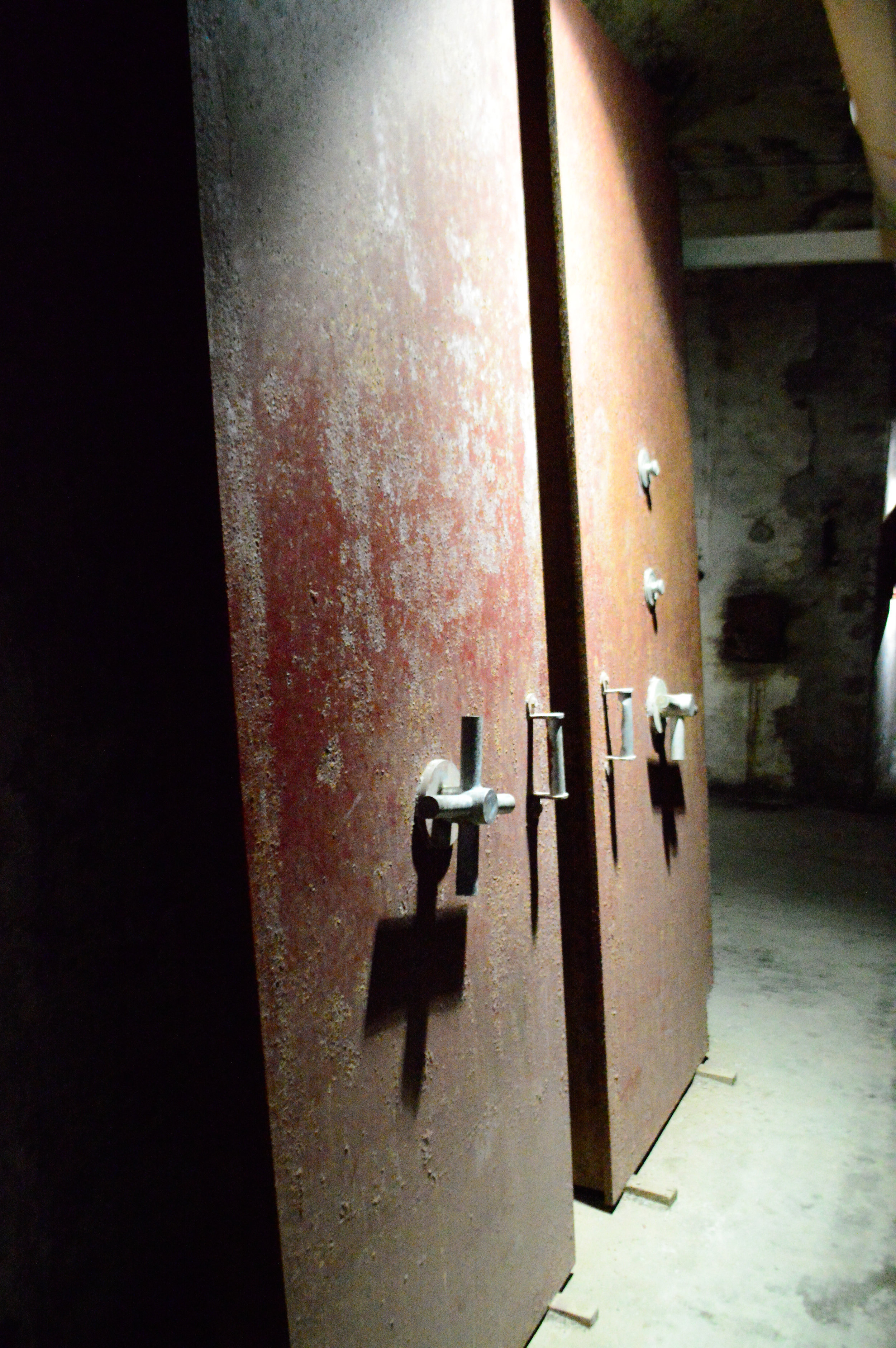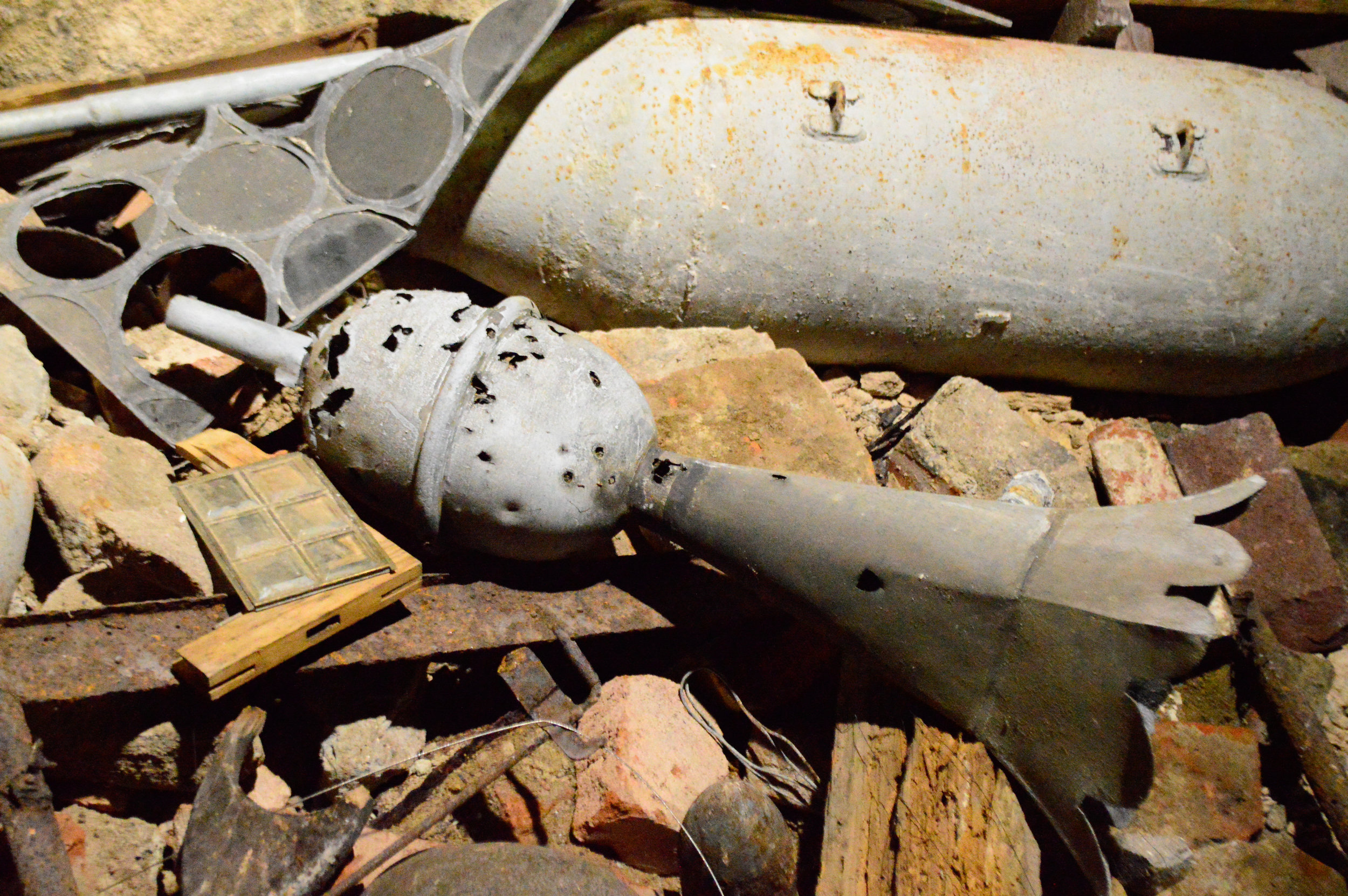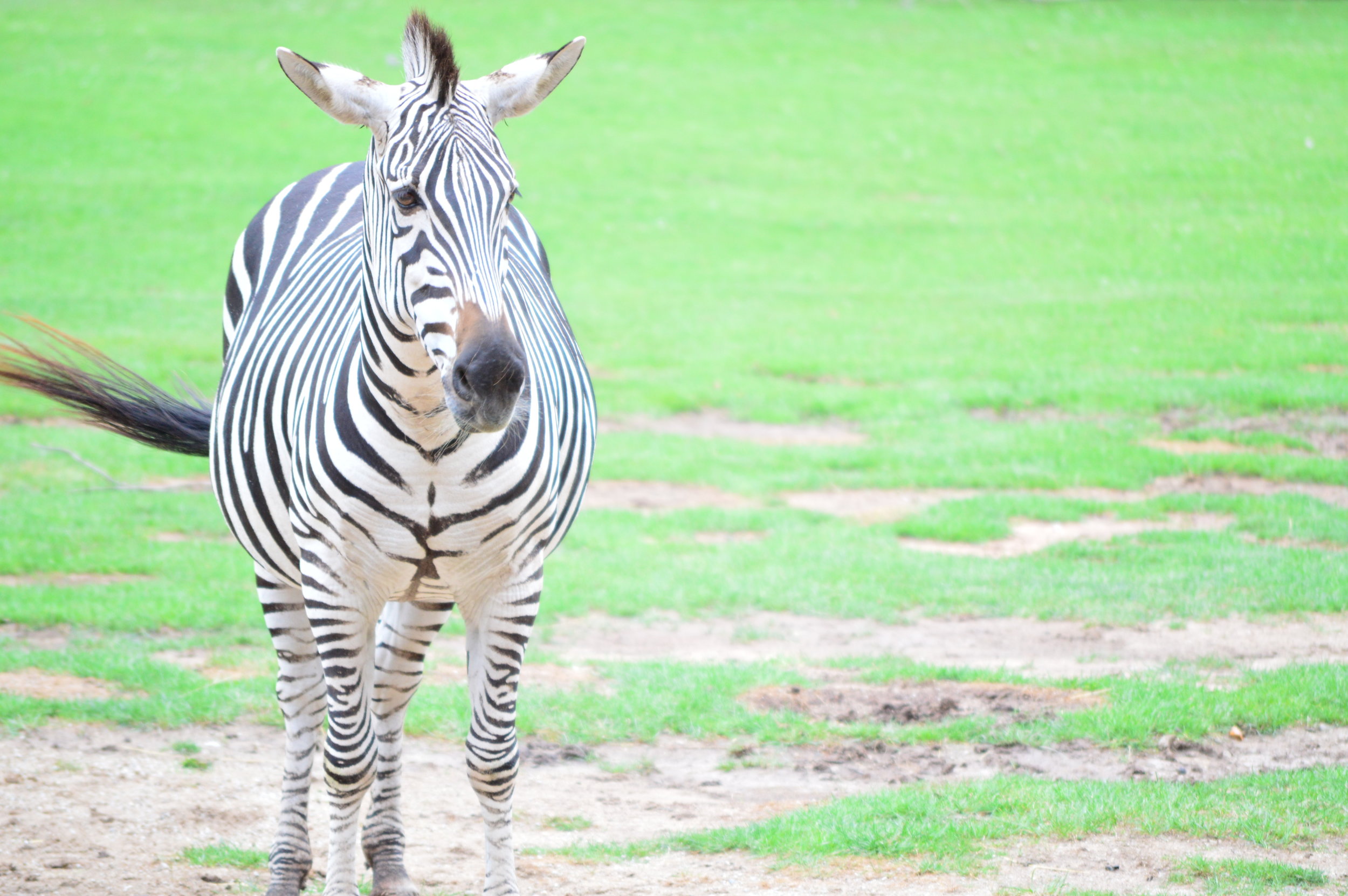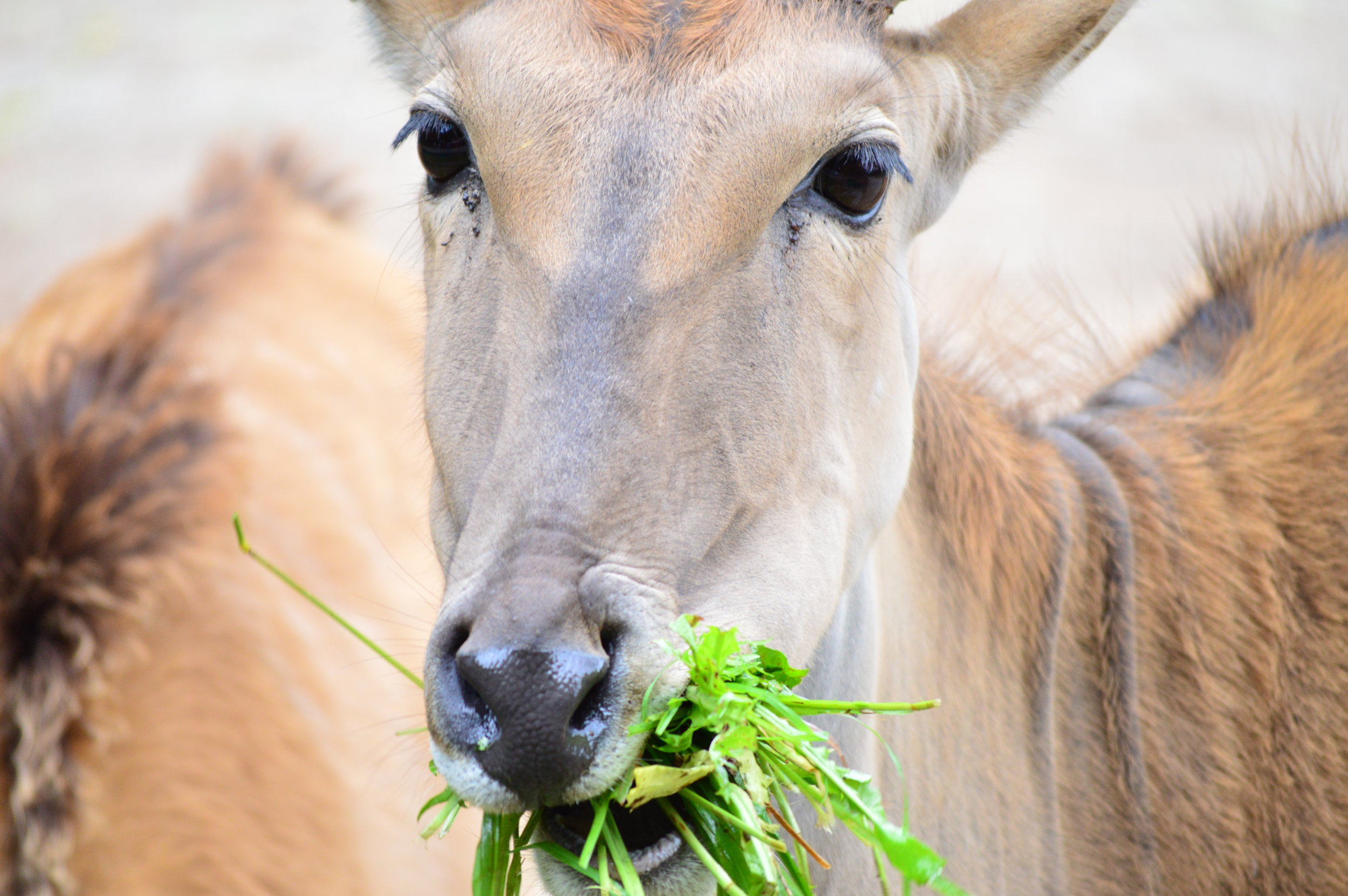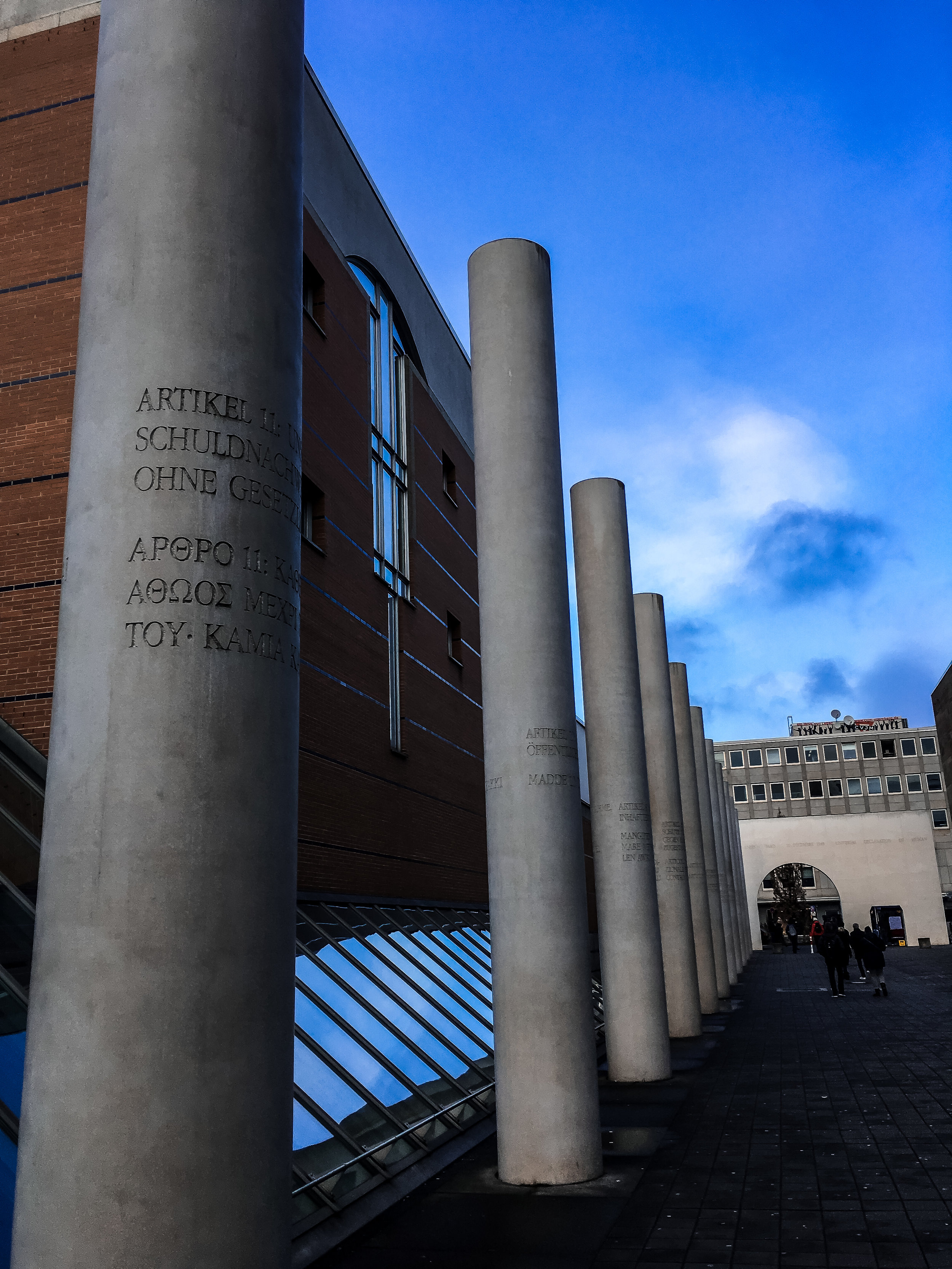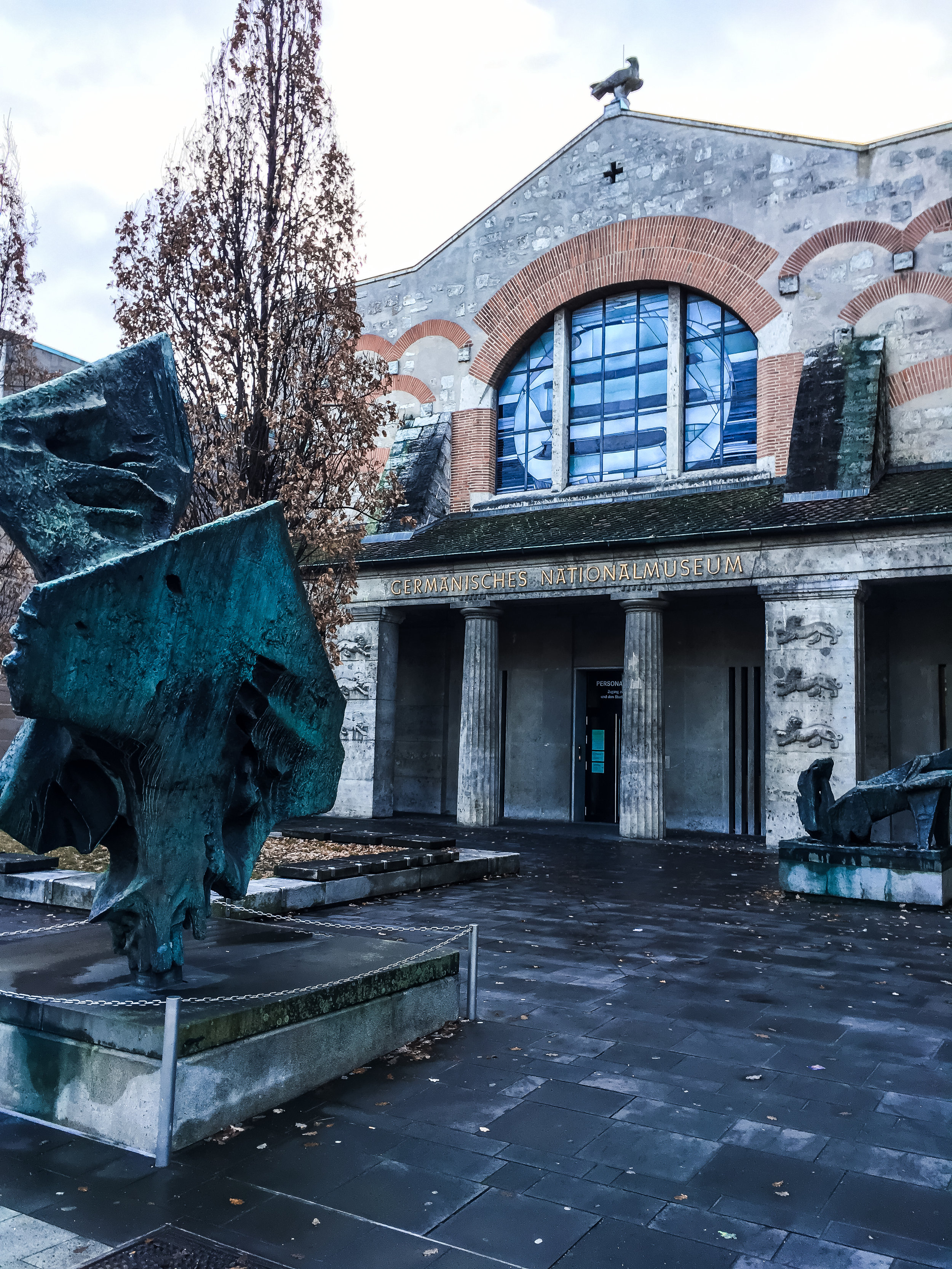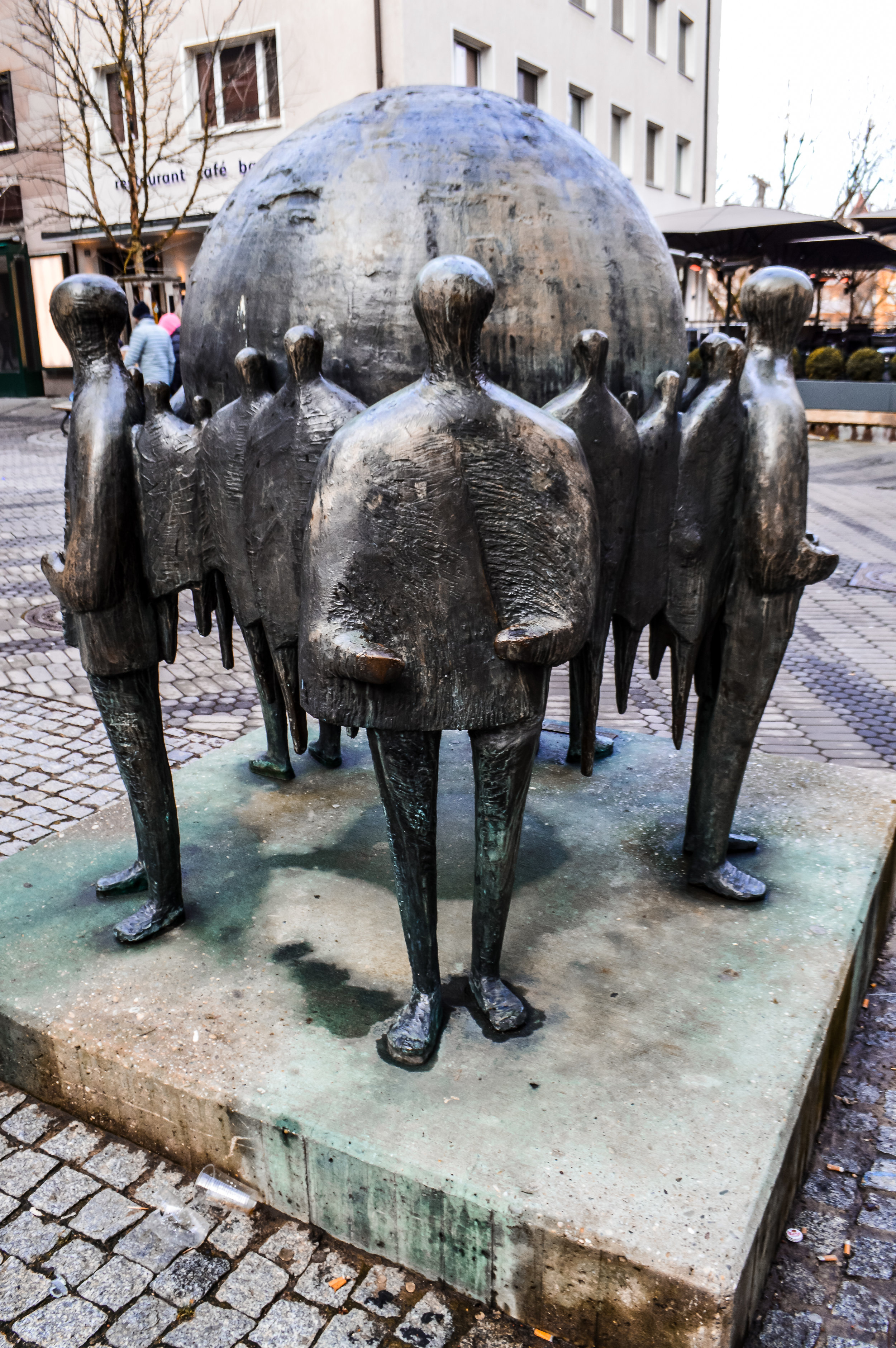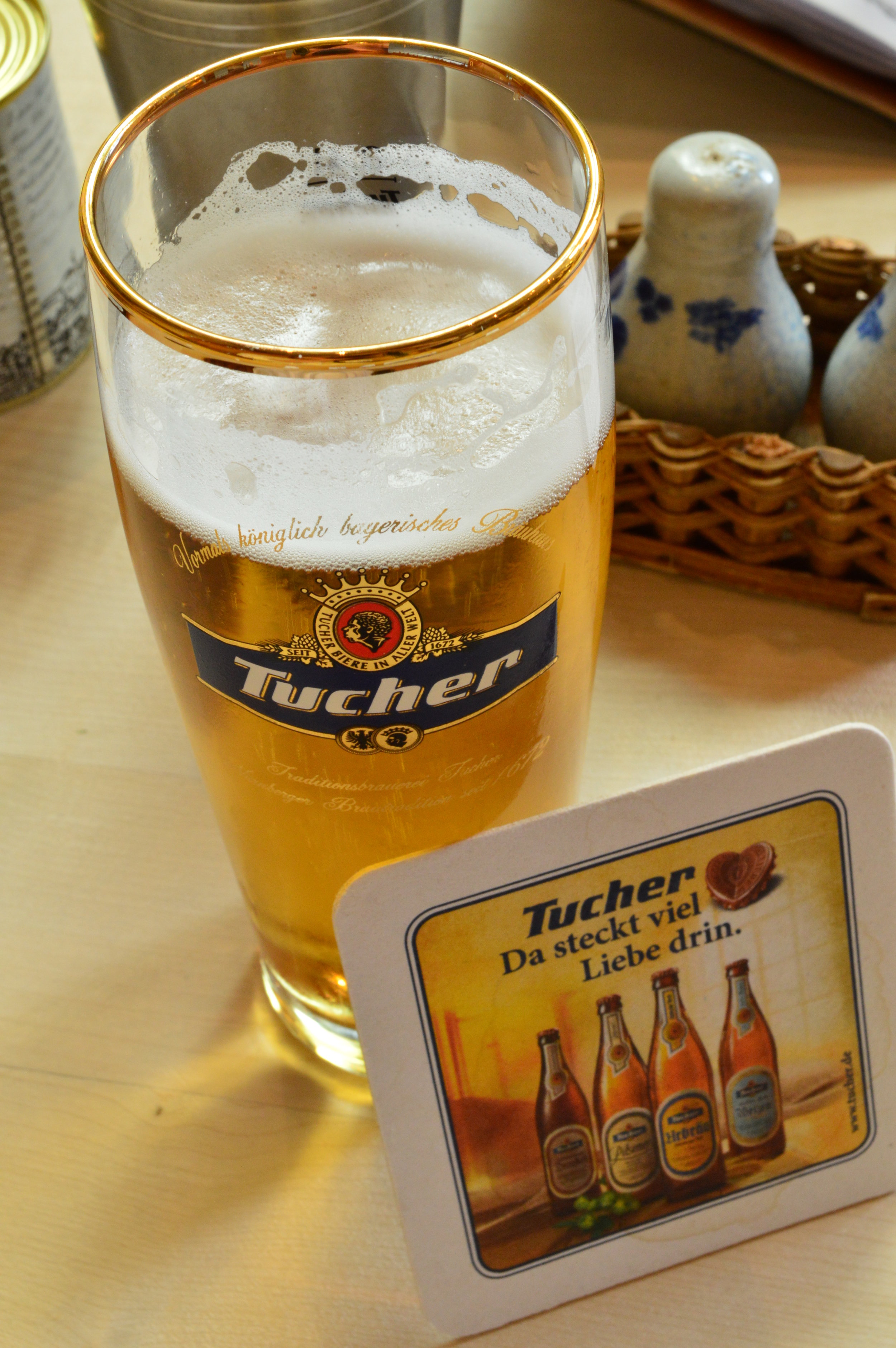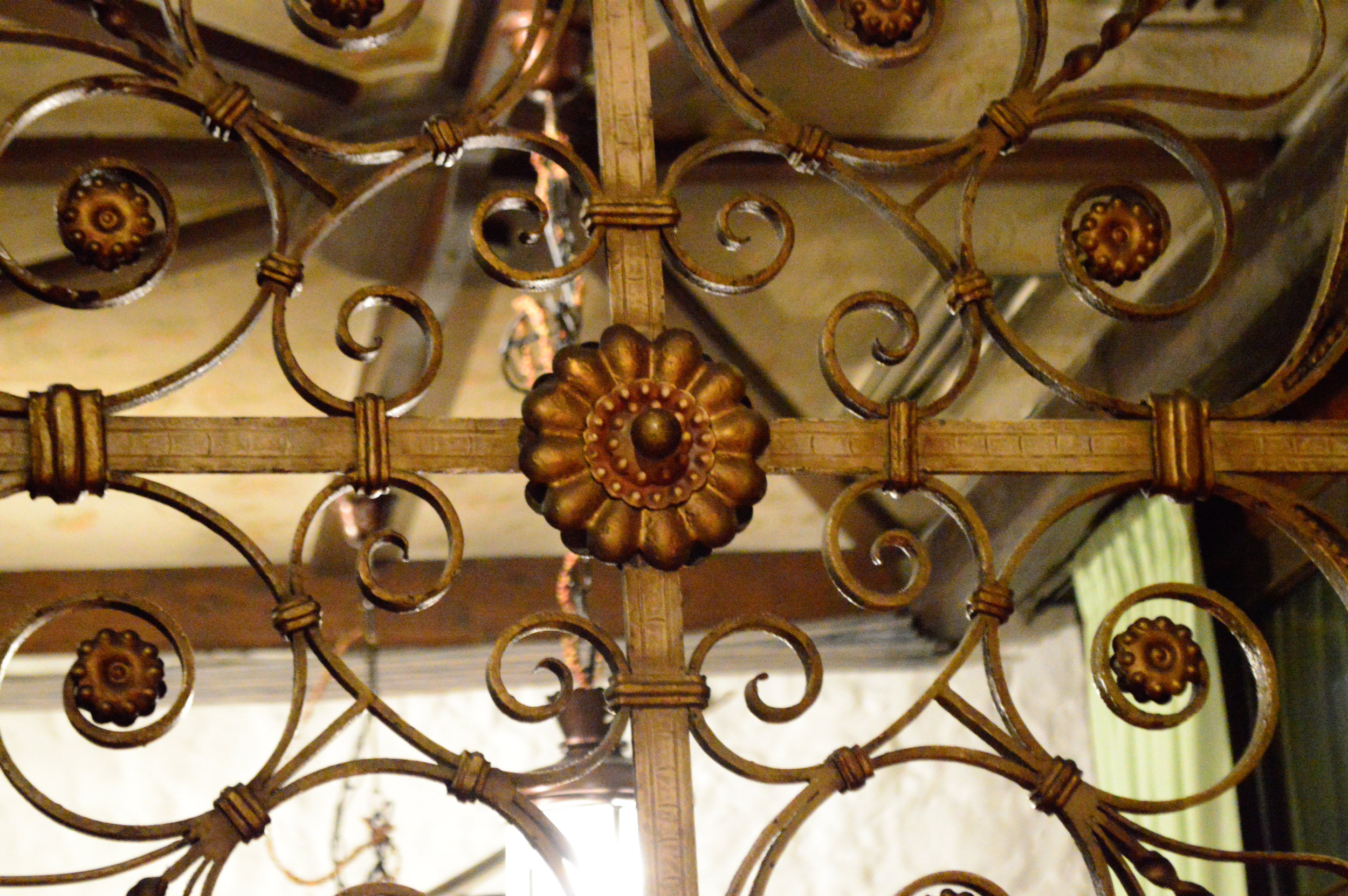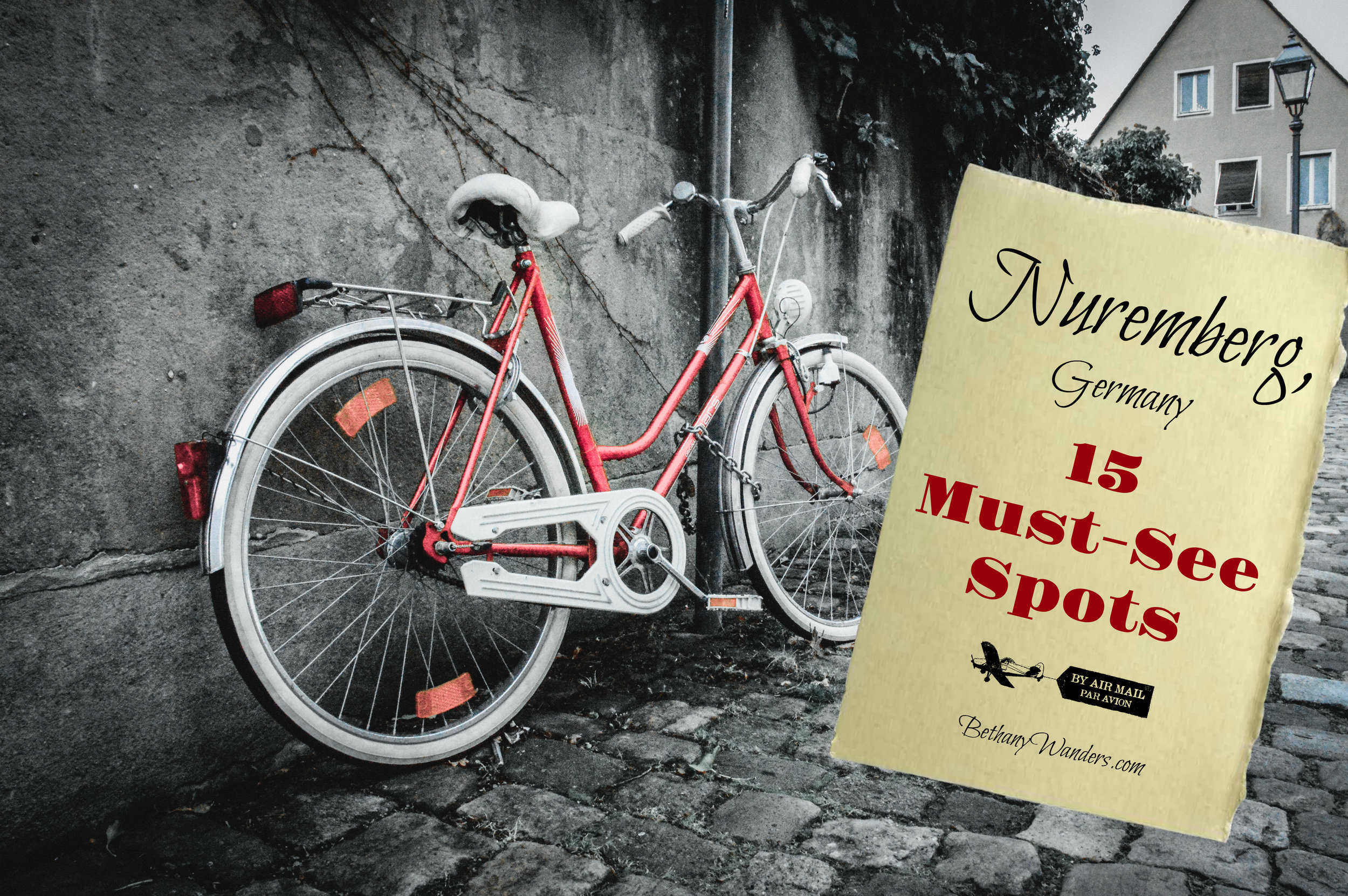Nuremberg, Germany
The “unofficial capital” of the Holy Roman Empire and the seat of some of the most infamous trials in history, this sprawling Bavarian city packs a significant historical and cultural punch for any traveler fortunate enough to tour its cobbled streets. While summer certainly offers plenty of picturesque photo-ops, falling temperatures don’t herald the end of Nuremberg’s season, as it hosts the world-famous Christkindlesmarkt (Christmas market) in December, transforming its romantic city squares into a glittering winter wonderland. Regardless of when you go, here are the top don’t-miss experiences and eateries in Nuremberg to really get to know the city and what it has to offer!
1. Nuremberg Castle (Nürnberger Burg)
Cutting an imposing silhouette against the Nuremberg skyline, this medieval castle overlooks the city from atop a sandstone hill, radiating history and formidable timelessness. Once the seat of German kings, and later Holy Roman Emperors, the castle can now be visited for a mere €7 per person, including the Imperial Castle itself, along with the Sinnwell Tower and Tiefer Well, which are nestled in a corner of the castle courtyard. While the fortress itself is certainly worth taking your time exploring, don’t miss the tower and well, particularly if you’re looking for stunning panoramic views.
2. St. Sebaldus
Practically dripping with ornate and intricate architectural embellishments, St. Sebaldus makes this list due to the powerful and poignant poetry and photo display inside. Though it (like almost every other building in Nuremberg) suffered heavy damage during World War II, it has since been gloriously restored -- though that glory doesn’t translate into the gilded ornamentation you might find in Italian cathedrals. The inside is fairly stark, relying on dizzyingly high vaulted stone ceilings and narrow windows housing jewel-like stained glass to inspire piety in its parishioners, all crowned by a towering organ designed by Peter of Köln. The atmosphere is solemn but not unwelcoming, and it certainly feels like a place where quiet contemplation could occur.
Like many churches in Germany, St. Sebaldus doesn’t charge its visitors for entry, though a small donation is recommended - which is certainly worth the opportunity to get some awesome atmospheric shots.
3. Frauenkirche (Church of Our Lady)
If you can find the central market square, there’s no way you’ll be able to miss this massive landmark church. While film buffs may recognize this massive Roman Catholic church from the final scene of Leni Riefenstahl’s 1935 film Triumph of the Will (starring none other than Hitler), these days the church is famous for a much friendlier reason: it’s the site of the annual opening of the Christmas market! Since 1948, the Nuremberg Christmas season has gotten its official start from the balcony of the Frauenkirche, just beneath one of the building’s most distinctive features. The Männleinlaufen is a huge mechanical clock dating back to the 16th century, which still sounds everyday at noon to celebrate the now-defunct Holy Roman Empire. If you can time your visit right, you can visit the church, do a little impulse shopping at the outdoor market just outside the church, and watch the mechanical pomp and circumstance before continuing to explore the city.
4. Schöner Brunnen and the Christmas Market
Speaking of intricate Gothic architecture, just across the market square from the Frauenkirche lies what looks like a miniature church spire piercing up out of the ground - this is the Schöner Brunnen, or Beautiful Fountain, a 14th-century fountain and one of Nuremberg’s top attractions. Though a fence keeps visitors from tossing coins into the fountain, legend has it that spinning the brass rings embedded in the fence will bring luck! And while there’s not much else to do at this fountain than look at it, you can get an extra helping of history from the figures adorning the spire: the prophets, princes, and philosophy personified all represent the ideology and worldview of the Holy Roman Empire. This place is a great place to grab a gelato from a nearby parlor and people-watch for a while.
Also in this market square is where the famous, annual Christkindles Market takes place throughout the month of December leading up to Christmas. To say that this event is breathtaking is an understatement. Row after row of beautifully decorated booths offer everything from hand-carved home decor to freshly-roasted chestnuts, glass-blown ornaments to piping hot gingerbread according to a 600 year old recipe, and everything crafty in between.
Everywhere at the market you’ll find many booths selling the famous small Nuremberg sausages as “3 im Weggla” (3 in a roll) to go; these are famous for Germans no matter where their origin. Finish off any evening after your city tours (or work!) with a warm mug of mulled wine, or "Gluehwein." Yum! There are dozens of food stands for all sorts of Christmas and Bavarian treats, and your Christmas shopping list can be well-addressed amongst the stores from local and international vendors selling their (often hand-made) wares. It is a definite bucket list item!
5. Medieval Dungeons
Located beneath the City Hall, Nuremberg’s medieval dungeons offer a fascinating (albeit macabre) perspective into the history of crime and justice in the city. This is particularly a must-see for those who love history and are curious about weapons, law, and all things spooky. Budget €3.50 for admission, but book in advance if you’re looking for an English tour (German tours run every 20 minutes from 10:00 to 16:30).
6. Albrecht Dürer’s House
By the time you’ve spent any time at all in Nuremberg, you’ll be familiar with this jack-of-all-trades and all-around genius. Lending his name to several streets, squares, restaurants, and shops throughout Nuremberg, Albrecht Dürer was a prominent and important figure of the German Renaissance. A painter and theorist, Dürer also was a pioneering printmaker - a trade Nuremberg is still famous for to this day! His theories delve into the realms of philosophy, mathematics, even theology, as he began to show some Protestant sympathies at the end of his life. Visit his house as a substitute for having a conversation with this brilliant mind, since it’s been renovated and turned into a museum dedicated to Nuremberg’s favorite son. Check out the recreation of his printmaking workshop and, for those who like their immersion with a little kitsch, take a tour of the house guided by Dürer’s wife Agnes herself.
Even if you don’t go inside, the house is worth stopping by, if only for its iconic half-timbered facade and quintessentially Bavarian appearance. There's a lovely statue of him around the corner if you head toward the city center as well.
7. Historic Art Bunker
A short walk from the Albrecht Dürer House, and directly beneath the castle, lies the tunnel complex housing the Historic Art Bunker (Historische Kunstbunker in German). During World War II, as Nuremberg endured the relentless shelling and firebombing of the Allies, forward-thinking Germans filled the Medieval tunnels below the castle with the priceless treasures of antiquity in order to save them from being decimated in air raids. This foresight and care meant that religious artifacts, codices, and even the Frauenkirche’s Automaton clock survived the war, preserved 24 meters below the Burg’s fortress-like facade. It’s definitely worth a visit to see these pieces of perfectly-preserved history, but it’s also a welcome reminder of how, even in the midst of war and violence, people look to the future with hope.
Guided tours are regularly available in German, but your €7 admission includes a complimentary audio guide if you’re more comfortable in English, French, or Spanish - but be advised: the bunker maintains cool temperatures all year round, so bring a sweater if you’re visiting in summer.
8. Nazi Party Rally Grounds & Museum
The Nazi Party Rally Grounds and Museum are a sobering must-see for their historical, social, and cultural significance alone. Start with the museum and opt for a complimentary audio guide with your €6 ticket. Although the exhibitions offer an unflinching examination of Nuremberg’s (and Germany’s) horrific past, it’s worth taking your time and taking full advantage of the audio guide. The museum shines a light in all the dark corners of the Nazi party, leaders, and ideology, from unfinished blueprints for architectural grandeur to bone-chilling records of the Nuremberg trials. After finishing the museum, you may want to wait to visit the rest for another day, which is fine - the spectral and crumbling parade grounds are open to the public for free.
9. Nuremberg Zoo
You may have to venture outside the Old Town (or Altstadt) of the city to get to the Nuremberg Zoo, but that doesn’t mean you’re leaving the history behind - in fact, there have been zoos in Nuremberg since the Middle Ages! This one was founded in 1912, but has since been renovated and expanded. Now spanning 170 acres, it’s one of the largest zoos in Europe, and houses around 300 animal species. Sprawling enclosures are built organically into the layout of the zoo, letting visitors feel like explorers while still staying at a safe distance. The whole zoo is a treat for animal lovers, but the bottlenose dolphin show in the Dolphin Lagoon is definitely a highlight! We spent the whole day making our way from one feeding and show to the next, which was an absolute blast (and included some surprising animal feedings!).
Slightly more expensive at €13.50 per person, this zoo is nevertheless well worth a visit.
10. Ehekarussell (The Marriage Fountain)
If you enjoy some good old fashioned schadenfreude, or you and your significant other share a darker sense of humor (or you’re recently single), you might love the controversial and grimly satirical Ehekarussell (loosely translated as The Marriage Fountain or The Marriage Carousel). Erected in 1984 to very mixed reviews, this massive statue by Jürgen Weber depicts with lurid distaste the cycle of love, marriage, and death. It isn’t that it’s a bad statue - Weber’s technical mastery is clear - it’s the focus on the tension, conflict, and self-destruction of marriage that seems to rub people the wrong way.
The best way to visit this sensational (and free) conversation piece is to bring a friend and play art critic, pondering over the artistic choices, which range from the gruesome to the monstrous to the downright classical.
11. Nuremberg Transport Museum
Your stay in Germany will likely include a train ride of some sort, and it’s definitely worth visiting this (gorgeous) museum to catch a glimpse of some of the ins and outs of Germany’s famed railway system. One of the oldest technical history museums in Europe, the Transport Museum houses such gems as the royal train of King Ludwig II of Bavaria, the immaculately-preserved Nordgau, which was built in 1853 and is the oldest steam locomotive in Germany, as well as the oldest railway vehicle in Europe (a coal wagon built in 1829).
Regular admission is just €6, but you can get a discount if you bring in a Deutsche Bahn ticket valid for the date of your visit.
12. The Way of Human Rights
This monument debuted in 1993 with the hope of shaking the shadows of fascism from Nuremberg’s shoulders, and has met with critical acclaim since. Consisting of an avenue lined with 27 white concrete pillars, two sunken pillars displaying a round plate, and a single oak, and bookended by the imposing concrete North Gate in the north and the medieval city wall to the south, this walkable art piece is worth a visit for both its symbolic value and its proximity to the German National Museum - also worth a visit.
13. Trempelmarkt (Nuremberg Flea Market)
Find off-beat or one-of-a-kind treasures at Nuremberg’s flea market - a twice-yearly curiosity bonanza that takes over the Old Town in May and September. With roots that stretch back over 400 years, these weekend-long rummage sales lure bargain hunters and collectors from all over, and you’d be surprised at what you can find - from valuable collectibles and military memorabilia, to priceless first editions and gag gifts. Trawl the stalls and you’ll easily find a collection of unique souvenirs.
In 2018 the flea market will be held May 11-12 and September 7-8.
Where to Indulge in the Local Grub
14. Goldenes Posthorn
Nestled in the shadow of the St. Sebaldus cathedral, this cozy and quintessentially Bavarian tavern is one of my personal favorites. Serving up hearty Franconian fare (read: meat and potatoes) and rich dark beers, Goldenes Posthorn dates back to the 15th century, and easily merits a mention here. Reviews fault the service as being inconsistent (or downright rude), but I think something must have been lost in translation, as my experiences (and those of my friends) have been pleasant, with servers who are patient and accommodating to English-speakers.
15. Hütt’n
This lovely eatery lies within walking distance of the castle, and serves more of the food that made the region famous: schnitzel, sausages, potato dumplings, and beers. The interior exudes the warmth and homey-ness of a lodge, while outdoor patio dining offers a breezy opportunity to people watch while tucking in to some delicious (and filling!) food. It won’t break the bank either - in fact, if you’ve traveled elsewhere in Germany, the prices on food and drink in Bavaria are likely to be comparatively low.



